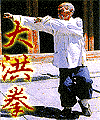|
The best kung fu e-books available, from the Shaolin online library!
| e-book |

|
Tang Ji Ren. TANG SHI QUAN SHU: PUGILISTIC ART OF THE TANG FAMILY
The book by Tang Ji Ren “DA HONG QUAN” was issued in November of 1933 with
assistance of the first martial art school in Hangzhou. The main part of the book contains the following sections: YI ZI BU
– “Steps along hieroglyph “one”, SHI ZI SHOU – “Arm blows along hieroglyph “ten”,
SHI ZI TUI – “Kicks along hieroglyph “ten”, DA HONG QUAN – “Big Hong Fist”, XIAO
HONG QUAN – “Small Hong Fist”, Tong Ren San Gu – “The copper man straightens his bones”,
HU ZHAO QUAN – “Methods of tiger claws”, HUANG LONG QUAN – “Fist of yellow dragon”. From
his early childhood Tang Ji Ren learned WU SHU from his father, prominent master Tang Peng Zhao (Tang Xian, 1856 – 1938)
who taught the small boy the basic of Shaolin tradition. Treatise “HUAN MO PAI QUAN XUE ” by Tang Xian and the
personal experience of the author in the martial art accumulated during many years is the core of the book. The book was written
as a guidance for training and had a lot of photos attached showing different aspects of each position and blow. All subtle
differences in movements and their combat use are commented in the text in detail. The book presents the Shaolin pugilistic
art (QUAN SHU) in the traditional manner. At first, stances and transitions from one stance to another are learned in a certain
succession, which helps to acquire material more quick and effective. Then basic arm and leg blows are learned, they are also
executed in a certain succession and according to a certain scheme. Repeated drills in basic skills done diligently lay the
required foundation, it is impossible to reach high levels of mastery without that. Later, learning combat methods DA HONG
QUAN and XIAO HONG QUAN follows. During several centuries Shaolin monks started to comprehend the Pugilistic Art through learning
those traditional styles. Mastery directly depends on time spent and diligence displayed for perfection certain elements,
that is why any stages of learning martial art, however simple they could appear to from the first sight, should not be omitted.
Chinese masters spend most of training time for improvement of movements and the base for movements is proper stances. As
they say in China, “before learning to go, it is necessary to learn how to stay.” Click picture to download (top
right).
|

